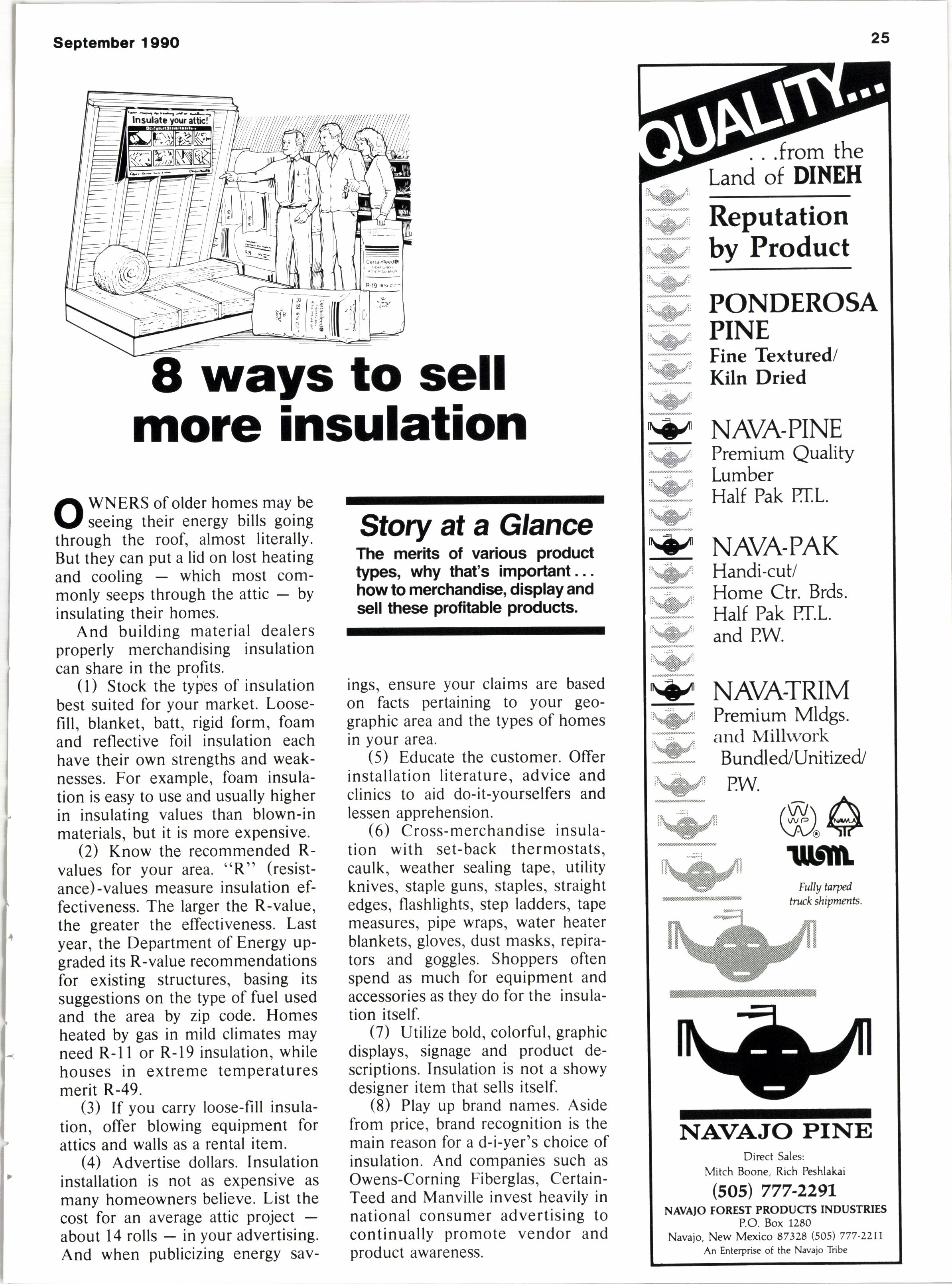
1 minute read
more insulation
1r\ WNERS of older homes may be V seeing their energy bills going through the roof, almost literally. But they can put a lid on lost heating and coolingwhich most commonly seeps through the attic - by insulating their homes.
And building material dealers properly merchandising insutation can share in the profits.
(l) Stock the types of insulation best suited for your market. Loosefill, blanket, batt, rigid form, foam and reflective foil insulation each have their own strengths and weaknesses. For example, foam insulation is easy to use and usually higher in insulating values than blown-in materials, but it is more expensive.
(2) Know the recommended Rvalues for your area, "R" (resistance)-values measure insulation effectiveness. The larger the R-value, the greater the effectiveness. Last year, the Department of Energy uPgraded its R-value recommendations for existing structures, basing its suggestions on the type of fuel used and the area by zip code. Homes heated by gas in mild climates may need R-ll or R-19 insulation, while houses in extreme temperatures merit R-49.
(3) If you carry loose-fill insulation, offer blowing equipment for attics and walls as a rental item.
(4) Advertise dollars. Insulation installation is not as expensive as many homeowners believe. List the cost for an average attic Projectabout l4 rollsin your advertising. And when publicizing energy sav-
llStory at a Glance
The merits of various product types, why that's amportant. how to merchandise, display and sell these proftltable products.
ings, ensure your claims are based on facts pertaining to your geographic area and the types of homes in your area.
(5) Educate the customer. Offer installation literature. advice and clinics to aid do-it-yourselfers and lessen apprehension.
(6) Cross-merchandise insulation with set-back thermostats, caulk, weather sealing tape, utility knives, staple guns, staples, straight edges, flashlights, step ladders, tape measures, pipe wraps, water heater blankets, gloves, dust masks, repirators and goggles. Shoppers often spend as much for equipment and accessories as they do for the insulation itself.
(7) Utilize bold, colorful, graphic displays, signage and product descriptions. Insulation is not a showy designer item that sells itself.
(8) Play up brand names. Aside from price, brand recognition is the main reason for a d-i-yer's choice of insulation. And companies such as Owens-Corning Fiberglas, CertainTeed and Manville invest heavily in national consumer advertising to continually promote vendor and product awareness.










